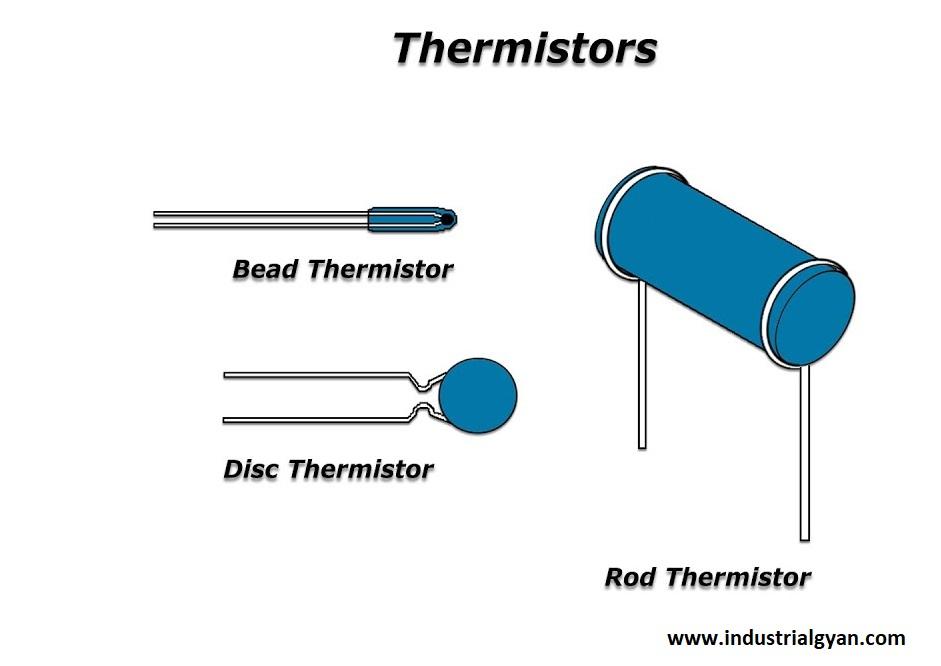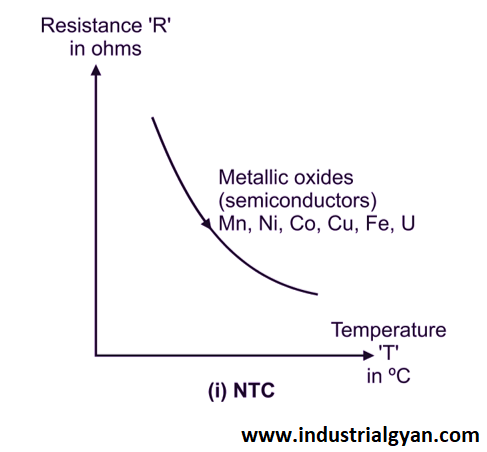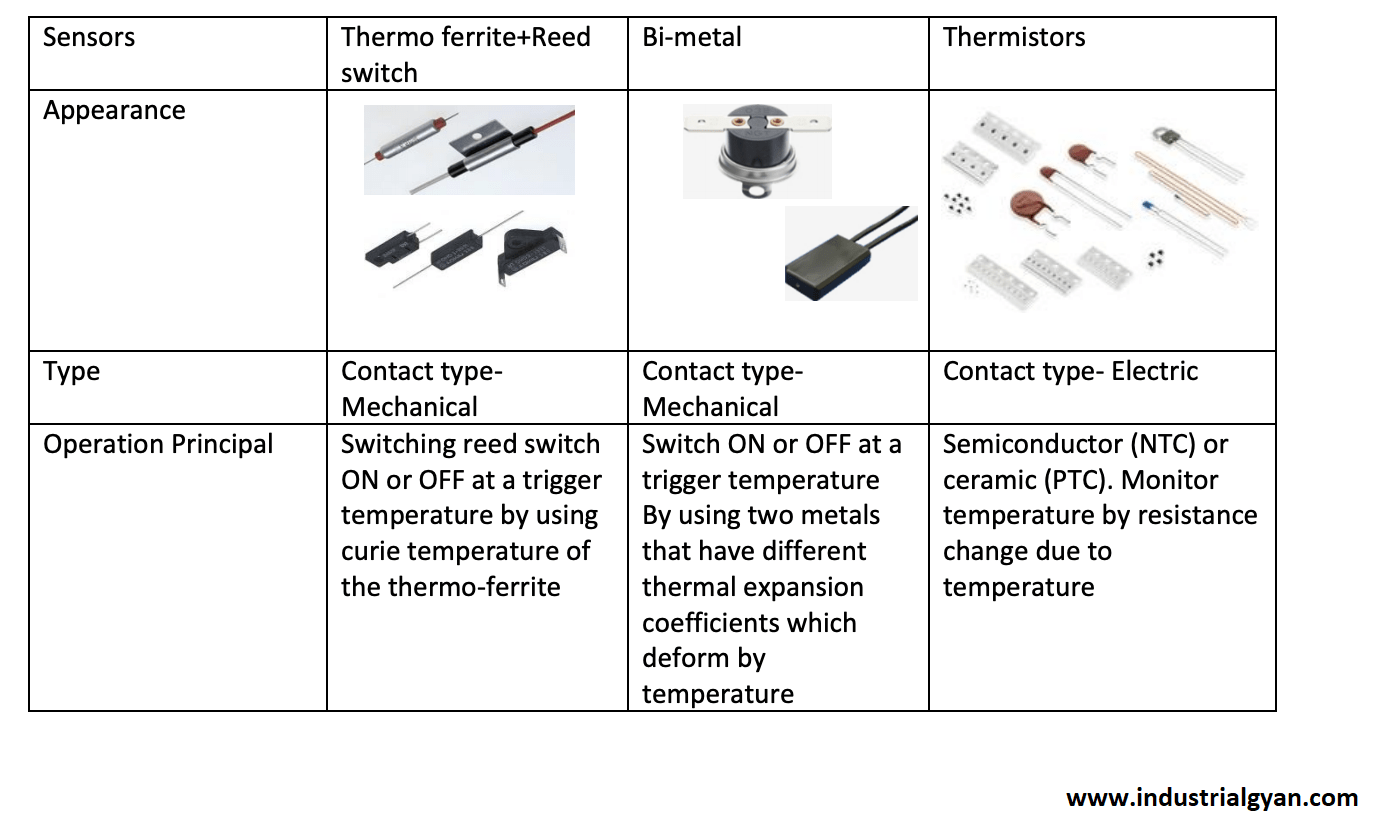Thermistors are electronic components used for temperature measurement and control in a variety of applications. They work on the principle of the dependence of electrical resistance on temperature, and their sensitivity to temperature changes makes them ideal for use in temperature-sensing circuits. In this article, we will explore the thermistor working principle, the different types available, and their applications.
Introduction to Thermistors
A thermistor is a type of temperature sensor that measures changes in electrical resistance with changes in temperature. The word “thermistor” is a combination of “thermal” and “resistor”, which describes its function. The resistance of a thermistor decreases as its temperature increases, and vice versa. This is because the temperature causes changes in the number of charge carriers (electrons or holes) in the thermistor material, which alters its resistance.

Types of Thermistors
There are two types of thermistors, namely the Negative Temperature Coefficient (NTC) and Positive Temperature Coefficient (PTC) thermistors. NTC thermistors have a negative temperature coefficient, which means that their resistance decreases with increasing temperature. PTC thermistors, on the other hand, have a positive temperature coefficient, which means that their resistance increases with increasing temperature.
Thermistor Working Principle
Thermistors are electronic components that are widely used for temperature sensing and control, as well as in other applications such as overcurrent protection and inrush current limiting. In this article, we will discuss the working principle of thermistors, the different types available, their advantages and disadvantages, how to choose the right one, and how to troubleshoot common problems.

How a Thermistor Works
The relationship between temperature and resistance in a thermistor can be described using the temperature coefficient of resistance (TCR). The TCR is a measure of how much the resistance of material changes with temperature. For thermistors, the TCR is typically negative for NTC thermistors and positive for PTC thermistors.
People often use the Steinhart-Hart equation to describe the relationship between temperature and resistance in a thermistor. This equation considers the non-linear behavior of the thermistor and can calculate the temperature based on its resistance.
Applications of Thermistors
The electronics industry extensively uses thermistors for temperature sensing and control. They also use them for overcurrent protection and inrush current limiting. Moreover, thermistors serve as temperature compensation in other electronic components.
Advantages and Applications of Thermistors
Thermistors have several advantages over other temperature sensors, including their high sensitivity, fast response time, and low cost. They are used in a wide range of applications, including the thermistor working principle.
Temperature Measurement and Control
People commonly use thermistors to measure temperature in various applications, including HVAC systems, refrigerators, and ovens. Additionally, they can use thermistors in temperature control circuits to maintain a specific temperature range.. for more information braking resistor
Thermal Management
Thermal management systems use thermistors to monitor the temperature of electronic devices and prevent overheating. These devices can turn on fans or other cooling systems when the temperature reaches a specific level.
Automotive Applications
The automotive industry uses thermistors to measure and control the temperature of various components, such as engines, transmissions, and air conditioning systems.. for more information classification of transducer
Medical Applications
Medical devices use thermistors for temperature monitoring, including fever thermometers and blood transfusion equipment. These devices rely on the working principle of thermistors.

Conclusion
Thermistors are versatile and reliable electronic components used for temperature measurement and control in various applications. Understanding the working principle of thermistors is essential in designing temperature-sensing circuits for different applications. Whether it’s for temperature measurement and control in HVAC systems, thermal management in electronic devices, or automotive and medical applications, thermistors have proven to be a valuable component in modern technology.
FAQs
- How accurate are thermistors in measuring temperature?
- Thermistors can be very accurate, with tolerances as low as ±0.1°C. However, the accuracy depends on the specific thermistor and circuit used.
- Can we use thermistors in high-temperature applications?
- Thermistors made of ceramic or platinum materials are designed for high-temperature applications.
- How do thermistors compare to other temperature sensors, such as thermocouples and RTDs?
- Thermistors have advantages over other temperature sensors, such as high sensitivity and fast response time.
- Can thermistors serve as temperature compensation in electronic circuits?
- Thermistors can adjust the current or voltage in a circuit based on temperature to keep the output constant.
- Do aging or environmental factors affect thermistors?
- Yes, humidity or exposure to radiation can affect thermistors over time
You can follow us on LinkedIn

I am a highly motivated and skilled individual with a passion for Electrical engineering. I have 1 year of experience in Robotics and Electrical engineering, which has allowed me to develop a strong set of skills in PLC, Painting Robots, SCADA. I am a quick learner and am always looking for new challenges and opportunities to expand my knowledge and skills. I am a team player and enjoy working with others to achieve a common goal. Successfully completed many projects for a various clients in the automobile sector.
Thank You

